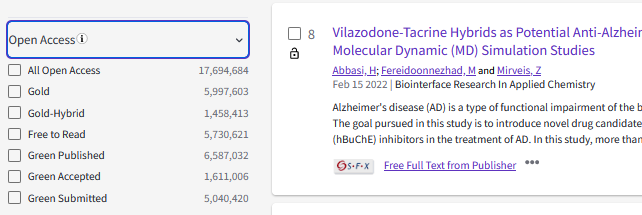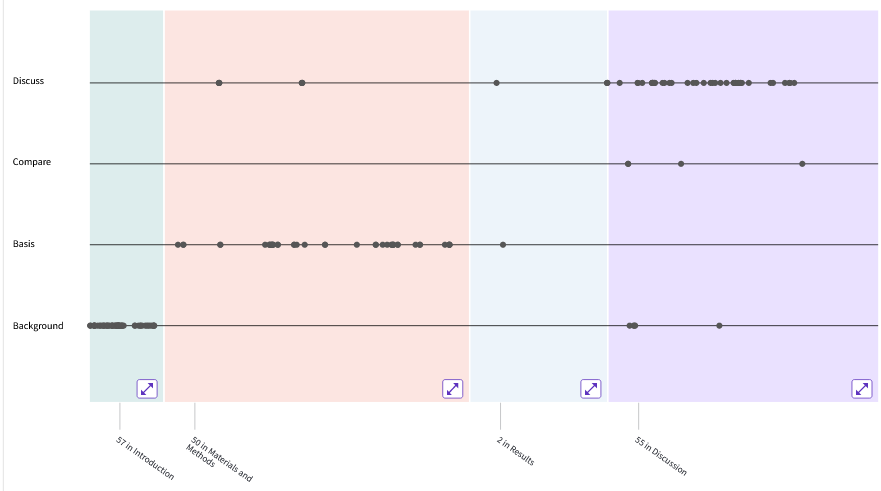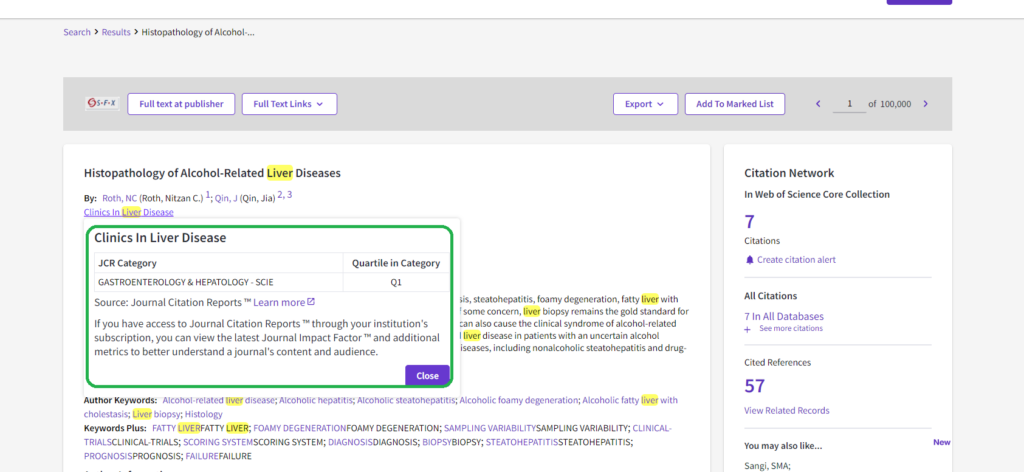Open Access identification now includes Green Submitted
Web of Science now identifies more articles with associated open access versions by including Green Submitted versions–original submitted manuscripts that have been self-archived in a public repository. These manuscripts do not include any changes introduced as part of the journal’s peer review or copyediting processes. You may wish to read these Green Submitted versions of articles if you do not have access to the version of record or if you want to understand the changes that occurred during the publishing process.
OurResearch’s Unpaywall Database is the source for identifying these new Green Submitted versions as well as Web of Science’s other open access version types. Web of Science is no longer using Directory of Open Access Journals (DOAJ) to identify articles from journals that contain solely open access articles. Because of this change in data source, Web of Science now refers to DOAJ Gold content as simply Gold.

Based on research to gauge the communities’ understanding of other open access labels, Web of Science also updated its labelling: Other Gold to Gold-Hybrid and Bronze to Free-to-Read. A complete list of supported open access types is provided below:
- Gold (formerly DOAJ Gold): Identified as having a Creative Commons (CC) license by OurResearch Unpaywall Database. All articles in these journals must have a license in accordance with the Budapest Open Access Initiative to be called Gold.
- Gold-Hybrid (formerly Other Gold): Items identified as having a Creative Commons (CC) license by OurResearch but that are not in journals where all content is Gold.
- Free-to-Read (formerly Bronze): The licensing for these articles is either unclear or identified by OurResearch as non-CC license articles. These are free-to-read or public access articles located on a publisher’s site.
- Green Published: Final published versions of articles hosted on an institutional or subject-based repository (e.g., an article out of its embargo period posted to PubMed Central).
- Green Accepted: Accepted manuscripts hosted on a repository. Content is peer reviewed and final, but may not have been through the publisher’s copy-editing or typesetting processes.
- Green Submitted: Original manuscripts submitted for publication, but have not been through a peer review process.
You may refine your search results to include only articles with open access versions. Green Submitted is included in the “Open Access” Quick Filter at the top of the refine panel. If you wish to view only results with a Green Submitted version associated with them, please use the Open Access refine options at the bottom of the refine panel.
Web of Science also displays a link to a free full-text version on both the search results and full record. Preference is given to the version that is closest to the version of record; all open access full-text links may be found in the Full Text Links dropdown from the full record page.

Enriched Cited References classified by use
Enriched cited references receives an exciting new enhancement—a classification of each in-text mention to indicate why the author may have cited the reference in each instance. Classifications are assigned by evaluating the author’s exact words in the sentence containing the mention as well as the sentence before and after. The mentions are classified as follows:
- Background—previously published research that orients the current study within a scholarly area.
- Basis—references that report the data sets, methods, concepts and ideas that the author is using for her work directly or on which the author bases her work.
- Compare—references that the current study’s results can be compared to; the author could be extending on a prior concept or method or confirming past findings or refuting past findings.
- Discuss—references mentioned because the current study is going into a more detailed discussion.
These classifications have been added to the existing enriched cited references visualization to help you find references that suit your needs but may appear outside the “expected” section. For example, if you wanted to look at references that are classified as “basis” but are not cited in the Materials and Methods section, you could review the references that appear along the “basis” classification line.

To view the desired reference, simply click on the dot in the visualization to view the cited references details. The classification appears alongside the author’s exact words. This additional information makes it easier for you to decide if you’d like to read the full-text at the publisher’s site.

Currently available in a beta format for selected journals as part of the enriched cited reference feature with plans to add more soon. Subscribers can view a sample of records that contain enriched cited references here.
ORCID, Awards, and Peer Review Counts on Author Records
Claimed Author Records now display a number of new fields from their public profile: ORCID (where integrated with the profile), awards badges, awards detail, and peer review and editor record counts. These help build a fuller picture of the researcher’s contribution and impact in their fields.

Journal Impact Factor Quartiles for all Web of Science subscribers
All Web of Science Core Collection subscribers can view a journal’s category and ranking by quartile from Journal Citation Reports even if they do not subscribe to Journal Citation Reports. To access this information, simply click on the Journal title from the search results page or the full record.

Tab-delimited export format
The new Web of Science now offers export to a tab-delimited file. This function is available in all databases.
Search Improvements
Set combination searches are now able to be expanded in the search history to show the full query by clicking on the dropdown arrow in the search history box.

Additionally, cited reference search queries are now displayed in the Advanced Search history, meaning they can be used as set combinations.
Analyze Results and Citation Report for saved Marked Lists
It is now possible to Analyze Results or create a Citation Report for a saved Marked List.

Additionally, all records can now be removed from an Unfiled or saved Marked List at once.
The WoS Product Team